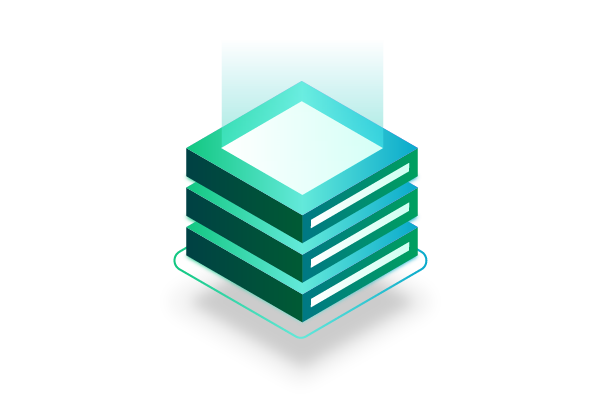As we step into 2025, the expectations for Layer 1 platforms have never been higher. It’s no longer just about being faster or cheaper—it’s about being smarter, more adaptive, and purpose-driven. The best Layer 1 solutions today are not just technical marvels; they are complete ecosystems, tailored for real-world use cases, developer creativity, and even AI integration.
Whether it’s enabling sovereign-grade scalability, empowering financial automation, or building intelligent agents that manage assets on your behalf, the new generation of Layer 1s is setting a higher bar. From modular blockchains to personalized AI chains, we’re witnessing a new breed of infrastructure that doesn’t just support the decentralized web—it defines how we interact with it. In this article, we dive into the ten most innovative, disruptive, and essential Layer 1 blockchains you need to know in 2025.
What is Layer 1 Solution?

Layer 1 solutions are the underlying architecture of a blockchain network. They deal with consensus algorithms, transaction validation, and form the core structure that ensures security and robustness. In short, Layer 1 solutions are the fundamental building blocks of any decentralized network.
Understanding Layer 1 is essential because it directly impacts the speed, scalability, and reliability of a blockchain system. It’s like the foundation of a house – the stronger it is, the more stable the entire structure will be.
Also Read : 17 Best Crypto Discord Groups to Join in 2025
With the growing interest in blockchain technology, various Layer 1 solutions have been developed. These are designed to address specific challenges, such as slow transaction speeds or limited scalability. Let’s delve into the 10 best Layer 1 solutions available today.
10 Best Layer 1 Solutions to know in 2025
As the blockchain landscape matures, Layer 1 solutions—the foundational blockchains that host decentralized applications and smart contracts—are at the core of the innovation storm. From personalized AI integration to green consensus mechanisms and cross-chain operability, the competition is heating up. In 2025, the best Layer 1s are not just scalable; they are adaptive, intelligent, and tailored for real-world impact.
Here are the 10 best Layer 1 solutions you should know in 2025, with HeLa leading the charge into a new era of decentralized intelligence and personalized innovation.
1. HeLa – Unleashing Your Personalized AI and Yields on a Single Chain
HeLa isn’t just another blockchain—it’s a new category of technology. By fusing personalized artificial intelligence with decentralized infrastructure, HeLa enables individuals and enterprises to access a unique blend of autonomy, security, and intelligent computation. It’s the first Layer 1 chain designed with adaptive AI agents as a native feature, giving users the power to automate decisions, generate passive yield, and manage complex tasks in real time.
Why HeLa Stands Out in 2025:
AI-Native Architecture: Users create personal AI agents (dubbed HeLpers) that learn behaviors, automate on-chain actions, and provide predictive insights for DeFi, governance, and business logic.
Unified Ecosystem: Instead of needing multiple tools or chains, HeLa brings AI, smart contracts, DeFi, and NFTs together in a seamless environment.
Yield Through Intelligence: HeLa introduces a new concept: AI-Optimized Yield Farming. Your HeLpers can analyze markets, adjust LP positions, and manage assets with minimal human input.
Enterprise Ready: With customizable AI workflows, data privacy layers, and compliance-ready modules, HeLa is ideal for businesses seeking blockchain utility without complexity.
Sustainable Scalability: Using modular architecture and zero-knowledge rollups, HeLa scales without compromising on speed or decentralization.
2. Celestia – The Modular Kingpin
Celestia leads the modular blockchain revolution. Unlike traditional monolithic Layer 1s, Celestia separates execution, consensus, and data availability into modular components. This allows developers to build customized execution layers (a.k.a. rollups) without compromising on security or speed.
Data Availability Layer: Makes it easy to launch fast, scalable chains.
Interoperable Ecosystem: Works with Ethereum, Cosmos, and more.
Rollup-Friendly: Perfect for the rollup-centric future of dApps.
In 2025, Celestia continues to empower devs with flexible building blocks, leading to rapid innovation and niche L1s that share a powerful backbone.
3. Sui – The Chain Built for Speed and Assets
Developed by ex-Meta engineers, Sui is optimized for high-speed asset ownership and digital interaction. Its object-based model allows for fast transaction finality and horizontal scalability, ideal for gaming, DeFi, and digital identity.
Parallel Execution Engine: Blazing fast transaction throughput.
Move Language: Safe and expressive smart contract development.
Asset-Centric: Optimized for NFTs, games, and dynamic ownership.
Sui has seen massive adoption in gaming and finance applications, becoming a go-to chain for consumer-facing dApps.
4. Monad – The High-Performance EVM L1
Monad is an emerging Layer 1 that seeks to challenge the EVM incumbents by offering extreme performance without compromising Ethereum compatibility.
High Throughput EVM: 10,000+ TPS with full EVM support.
Parallel Execution + Optimistic Processing: Efficient and secure.
Focus on DeFi & Infrastructure: Ideal for next-gen financial apps.
Monad is a power player for developers who love the EVM but need more horsepower.
5. Aptos – Smooth UX Meets Performance
Aptos, often nicknamed the “Solana of the Move language,” focuses on mainstream-friendly blockchain experiences without sacrificing security or decentralization.
Move-based Smart Contracts: Secure and intuitive.
Sub-second Finality: Fast enough for Web2-style UX.
Growing Ecosystem: Gaming, NFTs, DeFi, and social apps.
In 2025, Aptos has become a top destination for developers looking to bridge Web2 users into Web3 seamlessly.
6. Avalanche – Subnet Powerhouse
Avalanche’s subnet architecture continues to be a major innovation in 2025. Each subnet operates as its own customizable Layer 1 chain, with Avalanche’s Snowman consensus at the core.
Scalability via Subnets: Unlimited chains, customized for any use case.
Institutional Adoption: Used by major enterprises and governments.
EVM-Compatible: Supports existing Solidity tooling.
Its focus on regulated DeFi and enterprise-grade use cases makes Avalanche one of the most versatile Layer 1s in the world.
7. Sei Network – Optimized for Trading
Sei is a specialized Layer 1 optimized for trading applications—from decentralized exchanges (DEXs) to perpetual futures and beyond.
Native Order Matching Engine: Built into the consensus layer.
Fast Finality: Ideal for high-frequency trading.
Parallel Order Execution: Reduces front-running and latency.
Sei is a favorite among on-chain traders and algorithmic platforms, creating a niche where speed and fairness matter most.
8. Starknet – Zero-Knowledge Scaling from Day One
Though technically a Layer 2 on Ethereum, Starknet is evolving into its own ecosystem with L1 characteristics. Powered by STARK proofs, it enables secure, private, and scalable apps.
zk-STARKs: Advanced zero-knowledge technology.
Cairo Programming Language: Optimized for verifiable computation.
Scalability + Security: Perfect for complex, high-volume dApps.
As zk-tech becomes central to Web3, Starknet is a pioneer in zero-knowledge computation at scale.
9. Kaspa – The PoW Chain That Breaks the Rules
Kaspa uses a blockDAG architecture, enabling parallel blocks and ultra-fast confirmation times—without abandoning proof-of-work (PoW).
High-Speed PoW: No need to sacrifice decentralization for speed.
Security First: Maintains the robustness of PoW.
Low Latency: Ideal for rapid settlement and low fee transfers.
In a world moving toward PoS, Kaspa proves PoW still has a place—if done right.
10. Canto – Free Public Infrastructure for DeFi
Canto is an EVM-compatible Layer 1 designed as public infrastructure, meaning zero fees for developers on core protocols like lending and DEXs.
Free-to-Use Core Apps: Built-in DEX, lending, and stablecoin protocols.
No Incentivized Rent-Seeking: Community-focused economics.
Cosmos SDK + EVM: Cross-ecosystem capabilities.
In 2025, Canto stands out for ideological purity and community-led development, a rare gem in an increasingly corporate Web3 world.
Why Choose the Right Layer 1 Solution?
Selecting the right Layer 1 solution is more than just picking a popular name. It requires a deep understanding of your project’s needs, such as speed, security, or flexibility.
Each Layer 1 solution has its unique features and trade-offs. For instance, if you prioritize security, Bitcoin’s Layer 1 might be the ideal choice. If scalability is key, then solutions like Solana could fit the bill.
The point is, choosing the right Layer 1 can make or break your project. It’s a critical decision that requires careful consideration and research.
How to Evaluate Layer 1 Solutions

Evaluating Layer 1 solutions is a critical step in the decision-making process for anyone looking to build or invest in decentralized technologies. Below, we delve into the detailed process that can guide you in making an informed choice.
1. Understand Your Needs:
- Scalability: How many transactions per second (TPS) do you need? Will the network grow over time? Scalability should align with your project’s growth potential.
- Security: How vital is the security for your project? Understanding the consensus mechanisms and threat models can help in assessing this aspect.
- Decentralization: Do you require a fully decentralized network, or can there be some level of centralization? Your choice here may affect other factors such as speed and cost.
2. Research the Technology:
- Consensus Mechanism: Different Layer 1 solutions use various consensus mechanisms like Proof of Work (PoW) or Proof of Stake (PoS). Understanding these can help you gauge the network’s security and performance.
- Community Support: A thriving community can indicate ongoing development and support. Evaluate forums, GitHub repositories, and other social channels.
- Interoperability: If your project needs to communicate with other blockchains, you’ll want a Layer 1 that supports cross-chain compatibility.
- Regulatory Compliance: Consider how the Layer 1 solution complies with legal regulations in the jurisdictions where you operate.
Also Read: 12 Best High Yield Savings Account to Know in 2025
3. Consider Costs:
- Transaction Costs: Some networks may offer high throughput but at a higher cost per transaction. Assess whether these costs align with your budget.
- Development Costs: Consider the availability of tools, documentation, and community support, as these can significantly impact development expenses.
- Maintenance Costs: Look into the long-term costs of running nodes or participating in the network, including hardware, energy consumption, and ongoing support.
4. Test and Experiment:
- Use Testnets: Most Layer 1 solutions provide testnets that simulate the mainnet environment. Test your application here to gain insights into performance and usability.
- Evaluate Tools and Documentation: Well-maintained documentation and development tools can save time and resources in the development phase.
- Seek Community Feedback: Engage with the community to gather feedback, insights, or potential pitfalls with the particular Layer 1 solution.
5. Consider Environmental Impact:
- Energy Consumption: Evaluate the energy efficiency, especially if your organization or project has sustainability goals. PoS generally consumes less energy than PoW.
6. Analyze Long-term Viability:
- Development Roadmap: Review the future development plans to ensure that the Layer 1 solution will continue to align with your project’s direction.
- Historical Performance: Analyzing past performance, network uptime, and community engagement can give insights into long-term reliability.
Conclusion
As blockchain technology continues to evolve, the Layer 1 landscape of 2025 reflects a deeper, more purposeful shift—from abstract speculation to practical utility, from isolated systems to interoperable ecosystems, and from rigid code to intelligent automation. The projects leading the charge are no longer competing solely on speed or cost; they’re building entire universes tailored to specific needs, industries, and user experiences.
Whether it’s HeLa, pioneering the fusion of personalized AI with on-chain finance, or chains like Celestia, Sui, and Monad pushing the boundaries of scalability and flexibility, each of these Layer 1s represents a different vision for what decentralized infrastructure can and should be.
Together, they signal the dawn of a more intuitive, powerful, and human-centric Web3. In this new era, the chains we choose aren’t just networks—they’re platforms for identity, autonomy, intelligence, and opportunity. And if this list is any indication, the smartest chains in 2025 won’t just power dApps—they’ll think with you, grow with you, and open doors we haven’t yet imagined.
Disclaimer : The information provided by Hela Labs in this article is intended for general informational purposes and does not reflect the company’s opinion. It is not intended as investment advice or recommendations. Readers are strongly advised to conduct their own thorough research and consult with a qualified financial advisor before making any financial decisions.

Joshua Soriano
I am a writer specializing in decentralized systems, digital assets, and Web3 innovation. I develop research-driven explainers, case studies, and thought leadership that connect blockchain infrastructure, smart contract design, and tokenization models to real-world outcomes.
My work focuses on translating complex technical concepts into clear, actionable narratives for builders, businesses, and investors, highlighting transparency, security, and operational efficiency. Each piece blends primary-source research, protocol documentation, and practitioner insights to surface what matters for adoption and risk reduction, helping teams make informed decisions with precise, accessible content.
- Joshua Soriano#molongui-disabled-link
- Joshua Soriano#molongui-disabled-link
- Joshua Soriano#molongui-disabled-link
- Joshua Soriano#molongui-disabled-link


